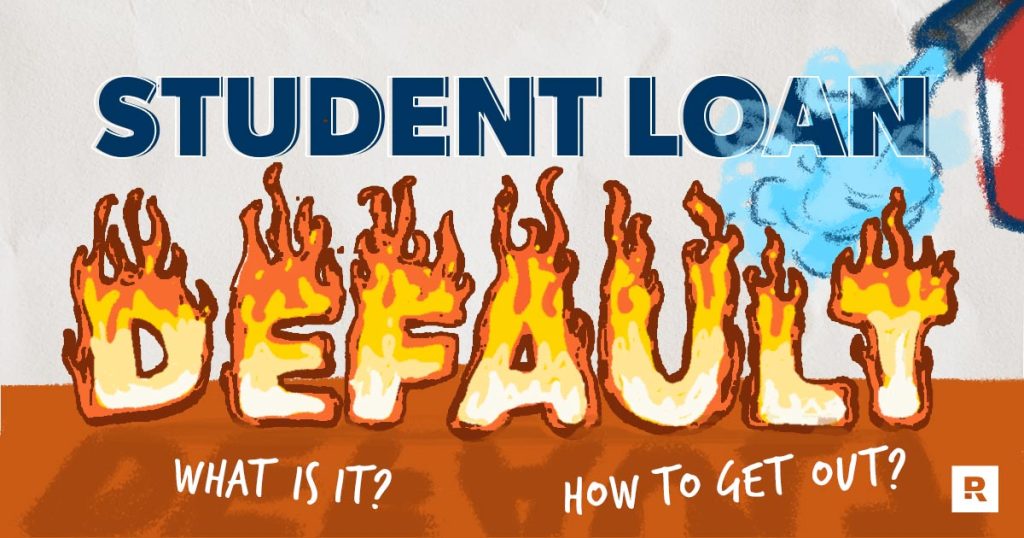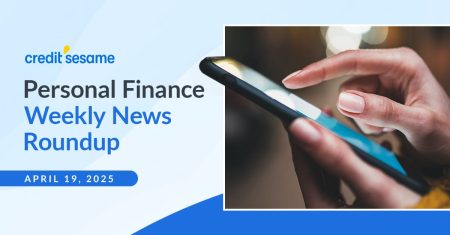Taking out student loans to pay for college seemed like a great idea at the time (hey, everyone was doing it!). But now you’re out of school and struggling to make your loan payments.
Maybe you’ve already defaulted on your student loans—or it’s just a matter of time before you do. Either way, you need to know exactly what defaulting means, how it impacts you, and (most importantly) how to get out.
What Is Student Loan Default?
Student loan default is what can happen if you fall behind on your student loan payments.
The timeline for defaulting depends on what kind of loan you have. But generally, your student loan first becomes delinquent immediately after you miss a payment. This is also when your lender or loan servicer may report your delinquency to credit agencies (Experian, Equifax and TransUnion).
Then, after a certain period of missed payments, your student loan goes into default. This is usually 270 days for federal student loans and 90 days for private student loans.
What Happens If You Default on a Student Loan?
While you can’t go to jail for defaulted student loans (phew!), there are still consequences for not paying your student loans—some more intense than others. Here’s what can happen if your student loan goes into default.
Federal Loans in Default
Here’s the deal: Federal loan servicers have the power of the government behind them—and they’re not afraid to use it if you owe them money. That said, here’s what happens if you default on federal student loans:
- Your entire loan balance becomes immediately due (plus interest). This is called loan acceleration—and yeah, it’s as scary as it sounds.
- The default is reported to credit agencies.
- You can’t apply for deferment or forbearance.
- You’re no longer eligible for an income-driven repayment plan.
- You can’t apply for more financial aid (including grants).
- Your wages can be garnished, as well as your tax refund and Social Security benefits. In other words, your student loan payment can be taken out of your paycheck before it even hits your bank account. (Yep, the government can do that.)
- You could be taken to court. Your lender may decide to sue you for the money you owe.
On-Ramp Period
From now until September 30, 2024, federal student loan borrowers who miss payments won’t have to face the consequences we just listed.1 (This only applies to federal loans that were affected during the payment pause.)
During this temporary period, loans won’t go into default, delinquencies won’t be reported to credit agencies, and loans won’t be sent to collections. But your payments will still be due, and interest will still make your balance grow—so you should still try to avoid defaulting if you can!
Private Loans in Default
Private lenders may not have the same power federal lenders do, but you definitely don’t get off easy! Here’s what happens if you default on private student loans:
- Your loans get sold to a collections company. You don’t want to deal with debt collectors if you can help it. Those folks don’t play nice.
- Your credit score takes a hit, as well as the credit score of anyone who cosigned for you. And while we’re not a fan of credit scores, we also don’t want you to trash your credit either.
- You can be taken to court. Your lender can sue you over your unpaid loan. You’ll probably have to pay court fees as well.
- Your wages may be garnished. This can only happen if your lender sues you and gets a court order to do so. But they can’t take anything from your tax refunds or Social Security checks.
How to Know If Your Student Loans Are in Default
If your student loans have been out of sight, out of mind for the last three years, you might not even know where you stand—including if you’re in default.
Ready to get rid of your student loans once and for all? Get our guide.
The best way to find out if your student loans are currently in default is to contact your loan servicer. You can also log in to your My Federal Student Aid account to see the repayment status of your student loan or check your credit report for any listed defaults.
Can You Go Back to School With Defaulted Student Loans?
Technically, yes, but colleges can choose to withhold your official transcript if you’ve got an unpaid balance or you’ve defaulted on a student loan. You also can’t apply for federal student aid if you’ve got defaulted loans. And while you definitely shouldn’t take out more student loans (especially when you’re already struggling to pay off the ones you have), we don’t want you to miss out on free money like grants and scholarships.
Your best bet is to get your current student loans out of default and find ways to cash flow the rest of your education. Even better if you can knock out your loans before going back to school!
How to Get Student Loans Out of Default
The good news is, no matter how far behind you may be on your student loans, you can get back in good standing. Here are some ways to get your student loans out of default:
Repayment
We mentioned earlier how your student loan immediately becomes due in full when you default. One option is to pay back your entire balance. But let’s be honest, this isn’t doable for most people. If you have private student loans, you might be able to negotiate a settlement with your lender (where you pay less than you owe in one lump sum).
Whatever you do, though, don’t take out a personal loan to pay off your student loan—you’ll just be signing yourself up for worse terms and a higher interest rate. Also, watch out for student loan forgiveness scams claiming they’ll wipe out your defaulted student loans for a small fee.
Rehabilitation
In most cases, your best option for getting out of default is to rehabilitate your student loans. You have to make nine monthly payments within 10 months, and those payments are usually 15% of your discretionary income (the amount of income you have left after your set expenses are taken care of). This gives you time to focus on covering the basics while also getting your student loans back in good standing. But you can only rehabilitate your student loans once, so make sure you understand all the terms and use this to jump-start your progress paying off your loans.
Good to Know: Right now, the only way to rehabilitate your student loans is through the Fresh Start program (which we’ll talk more about in a minute).
Consolidation
Now, normally, we don’t recommend debt consolidation. But consolidating your student loans is the one exception. You can combine your multiple federal student loans into one loan for free through the government with a Direct Consolidation Loan. Your student loans will no longer be in default, and you’ll get a new fixed interest rate (the weighted average of all your current rates). But it may drag out the length of your loan—which can cost you more money in the long run. Like rehabilitation, you can only consolidate your federal loans once. So, if you choose to go this route, use it to boost your progress—not slow it down. Throw as much extra money as you can at your loan until it’s gone!
Fresh Start Program
If your student loans were already in default before the pandemic, you can get back in good standing through the Fresh Start program. And in case you’re wondering, this doesn’t count as your one chance to rehabilitate your loans (like we mentioned earlier).
If you’ve got student loans in default, you automatically get the following relief without enrolling in Fresh Start (but keep in mind, you’ll need to actually enroll in the program if you want these benefits to last after September 2024):
- Collections are stopped. Right now, debt collectors can’t contact you, your wages can’t be garnished, and tax refunds and Social Security payments can’t be withheld.
- You have access to federal student aid (including loans). But like we said before, you shouldn’t even think about taking out student loans right now (or ever).
- Your loans are reported as “current” to credit agencies.
If you enroll in Fresh Start, you’ll also:
- Have your defaulted loans transferred from the Default Resolution Group to a new loan servicer.
- Have the default removed from your credit report.
- Be able to choose a new repayment plan.
- Be able to defer or forbear your student loans.
- Have access to student loan forgiveness programs. This might sound great, but federal programs like Public Service Loan Forgiveness (PSLF) are not worth it.
Get the Student Loan Help You Need
We know student loan debt can feel like a huge weight—especially if you’re in default. But there’s hope! Maybe you just need someone who will talk you through all your options (without judgment) and give you a clear path forward. That’s where a financial coach can help!
If you’re ready to get on top of your student loans, a Ramsey Preferred Coach will answer your questions and help with your specific situation. Talk with a financial coach for free today! It’s time to put that default where it belongs—in the past.
Get Out of Default and Stay Out of Default
Having a written plan for your money every month (aka a budget) is the best way to take control of your student loans. Get started with the EveryDollar budgeting app!
Create Your Free Budget
Read the full article here












